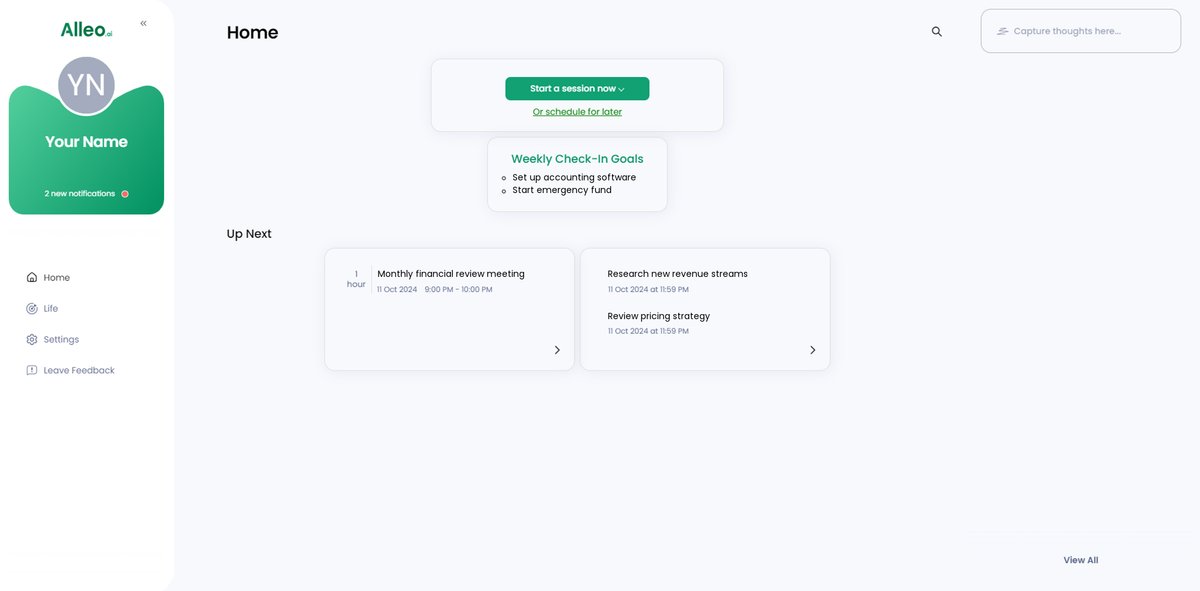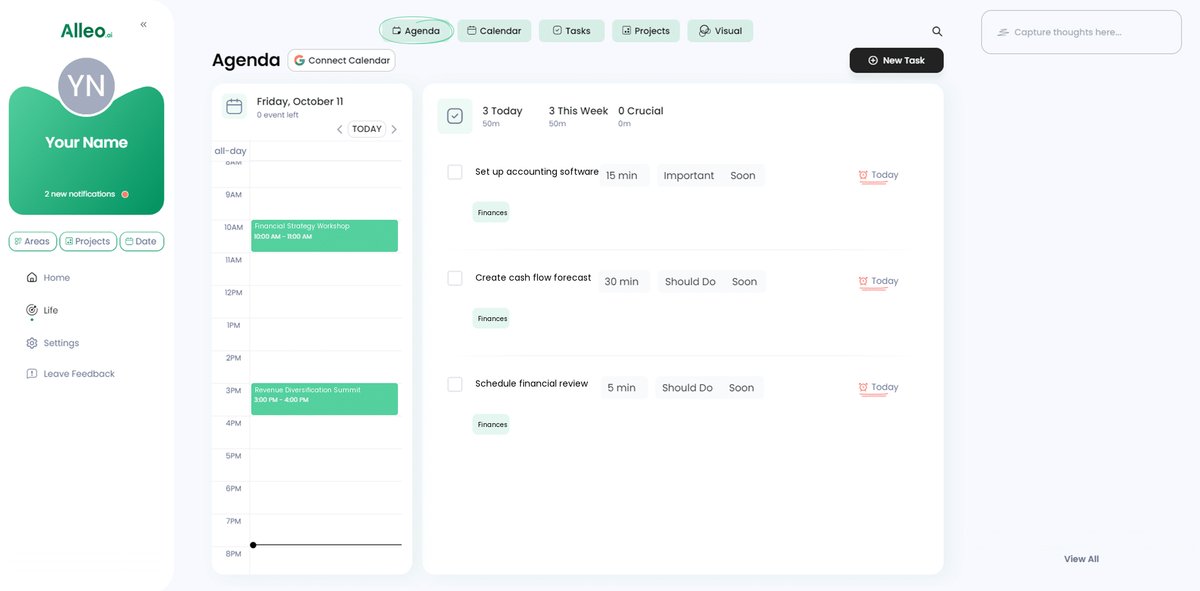Master Financial Management: 3 Key Strategies for Small Business Profitability
Are you struggling to optimize your small business’s financial management and profitability? Small business financial optimization can be challenging, but it’s crucial for success.
As a life coach, I’ve helped many small business owners navigate these challenges. I often encounter entrepreneurs who are overwhelmed by the complexities of financial management, including cash flow management and tax planning for small businesses.
In this article, you’ll discover actionable strategies to improve your financial health. We’ll explore techniques like robust financial tracking, diversifying revenue streams, and creating an emergency fund. We’ll also touch on budgeting techniques, cost reduction strategies, and profit margin analysis.
Let’s dive in and explore how small business financial optimization can transform your enterprise.

Understanding the Challenges of Financial Management
Effective financial management is crucial for small business financial optimization. However, many small business owners struggle with tracking expenses, maintaining profitability, and managing cash flow.
Without proper financial oversight, it’s easy to lose sight of where your money is going. This can lead to cash flow management issues and even business failure.
In my experience, several clients initially struggle with understanding the intricacies of financial statements. They often find it challenging to distinguish between profit and cash flow, which are both vital for sustainability and small business financial optimization.
Furthermore, many small businesses face high failure rates due to poor financial management. According to statistics, 30% of businesses fail during the first two years, 50% during the first five years, and 65% during the first 10 years (source).
This emphasizes the importance of implementing robust financial strategies, including budgeting techniques and financial forecasting.
The pain of financial mismanagement is real. It can prevent growth and lead to unnecessary stress, impacting profit margin analysis and pricing strategies.
Let’s explore actionable strategies to overcome these challenges in small business financial optimization.

Three Key Strategies for Optimizing Financial Management
Overcoming this challenge requires a few key steps in small business financial optimization. Here are the main areas to focus on to make progress:
- Implement Robust Financial Tracking Systems: Use reliable accounting software and schedule regular financial reviews to improve cash flow management and bookkeeping best practices.
- Diversify Revenue Streams and Optimize Pricing: Explore new revenue opportunities and adjust pricing strategies based on market research and profit margin analysis.
- Create and Maintain an Emergency Fund: Set aside a portion of profits to ensure business stability during unforeseen challenges, enhancing your financial forecasting abilities.
Let’s dive into these small business financial optimization strategies!
1: Implement robust financial tracking systems
Having a robust financial tracking system is essential for small business financial optimization and managing your business’s financial health.
Actionable Steps:
- Choose reliable financial software for small businesses like QuickBooks or Xero for effective bookkeeping.
- Schedule monthly financial review meetings and compare financial statements against the budget, incorporating budgeting techniques.
- Develop a 12-month cash flow forecast and update it monthly with actual data to improve cash flow management.
Explanation: Implementing these steps ensures you stay on top of your finances. Using reliable accounting software helps you track income and expenses efficiently, supporting cost reduction strategies.
Regular reviews allow you to identify and address discrepancies quickly. Cash flow forecasting helps you plan for potential cash shortfalls and supports financial forecasting efforts.
According to Capital Tax, keeping up with financial trends is crucial for adapting strategies and anticipating market shifts.
Key benefits of robust financial tracking:
- Improved decision-making based on accurate data, aiding profit margin analysis
- Early detection of financial issues
- Enhanced ability to secure funding or investments
These steps will help you gain better control over your finances, paving the way for sustainable growth and optimal small business financial optimization.

2: Diversify revenue streams and optimize pricing
Diversifying revenue streams and optimizing pricing are essential for enhancing profitability and reducing risk in small business financial optimization.
Actionable Steps:
- Identify at least two new revenue streams. Conduct market research and set revenue targets for each as part of your financial forecasting strategy.
- Review and adjust pricing strategies. Implement value-based pricing for high-demand items and consider competitor pricing to improve profit margin analysis.
- Use customer data to identify profitable segments. Tailor marketing strategies to these segments and aim to increase revenue by 10% through effective cash flow management.
Explanation: Diversifying revenue streams helps stabilize your business by reducing reliance on a single income source, a key aspect of small business financial optimization.
Optimizing pricing ensures you’re capturing maximum value from your products or services, contributing to improved profit margin analysis.
According to BizTech Connect, strategic planning and growth strategies are crucial for small business success.
These steps will boost your profitability and help you stay competitive through effective budgeting techniques and cost reduction strategies.
Next, let’s explore the importance of creating and maintaining an emergency fund to safeguard against unforeseen challenges in small business financial optimization.

3: Create and maintain an emergency fund
Creating and maintaining an emergency fund is crucial to ensure your business remains stable during unforeseen challenges, an essential aspect of small business financial optimization.
Actionable Steps:
- Establish an initial fund: Set aside 10% of monthly profits into an emergency fund. Aim to save at least three months’ worth of operating expenses, a key budgeting technique.
- Automate savings: Set up automatic transfers to the emergency fund account to ensure monthly contributions without fail, improving cash flow management.
- Regularly assess the fund: Review the emergency fund twice a year and increase its size as the business grows, aligning with financial forecasting practices.
Explanation: Establishing an emergency fund provides a financial cushion during tough times, ensuring business continuity. Automating savings makes the process seamless, while regular assessments help adjust the fund size according to business needs, supporting profit margin analysis.
This approach aligns with recommended practices for maintaining strong cash flow management.
Potential uses for an emergency fund:
- Covering unexpected equipment repairs or replacements
- Bridging gaps during seasonal revenue fluctuations
- Maintaining operations during economic downturns
Next, let’s explore how Alleo can assist in implementing these strategies effectively.

Partner with Alleo on Your Financial Management Journey
We’ve explored the challenges of small business financial optimization, the benefits of solving them, and actionable steps. But did you know you can work directly with Alleo to make this journey easier and faster?
Alleo provides tailored coaching support for optimizing financial management and profitability. With Alleo, you get full coaching sessions like any human coach, plus a free 14-day trial with no credit card required. Our expertise covers cash flow management, budgeting techniques, and cost reduction strategies.
Setting up an account is simple. Create a personalized plan with Alleo’s AI coach to tackle your specific challenges, including tax planning for small businesses and financial forecasting.
Alleo follows up on your progress and handles changes. You’ll stay accountable through text and push notifications, helping you maintain focus on profit margin analysis and inventory management.
Let’s make your small business financial optimization journey smoother.
Ready to get started for free? Let me show you how to improve your pricing strategies and bookkeeping best practices!
Step 1: Logging in or Creating an Account
To begin optimizing your financial management with Alleo, Log in to your account or create a new one to access personalized coaching support.

Step 2: Choose “Building better habits and routines”
Click on “Building better habits and routines” to establish consistent financial management practices that will help you track expenses, diversify income, and maintain an emergency fund, addressing the key challenges outlined in the article.

Step 3: Select “Finances” as Your Focus Area
Choose “Finances” as your primary focus area in Alleo to directly address the financial management challenges discussed in the article, allowing you to receive tailored guidance on implementing robust tracking systems, diversifying revenue streams, and creating an emergency fund for your small business.

Step 4: Starting a coaching session
Begin your financial management journey with Alleo by scheduling an initial intake session, where you’ll collaborate with the AI coach to create a personalized plan tailored to your small business’s specific financial challenges and goals.

Step 5: Viewing and Managing Goals After the Session
After your coaching session, check the Alleo app’s home page to review and manage the financial management goals you discussed, allowing you to track your progress and stay accountable to your business’s financial objectives.

Step 6: Adding events to your calendar or app
To track your progress in optimizing financial management, use the calendar and task features in Alleo to schedule regular financial reviews, cash flow forecasts, and emergency fund assessments, ensuring you stay on top of your business’s financial health.

Wrapping Up Your Financial Management Journey
We’ve covered a lot, but remember, effective financial management is crucial for small business financial optimization and success.
Implement robust financial tracking, diversify revenue streams, and create an emergency fund for improved cash flow management.
These steps are essential for optimizing your business’s financial health through budgeting techniques and cost reduction strategies.
You’re not alone in this journey of financial forecasting and profit margin analysis.
Take control of your financial management now, including inventory management and pricing strategies.
With Alleo, you get tailored coaching support to make this process easier, including guidance on bookkeeping best practices.
Try Alleo for free and see the difference it can make in your small business financial optimization efforts.
Let’s ensure your business thrives with effective tax planning for small businesses.
Ready to transform your financial management using financial software for small businesses?